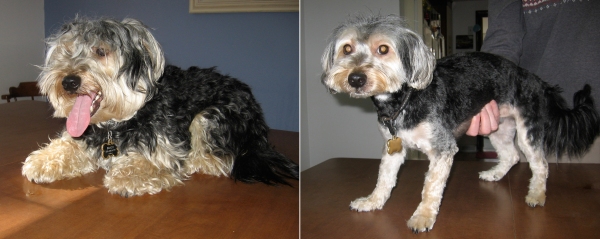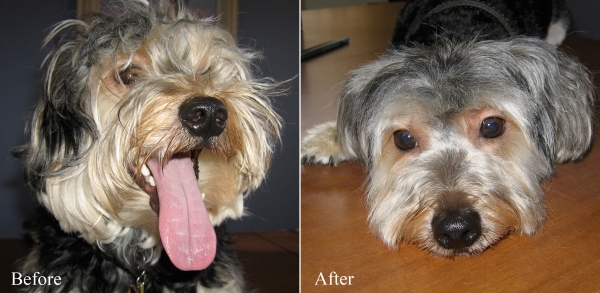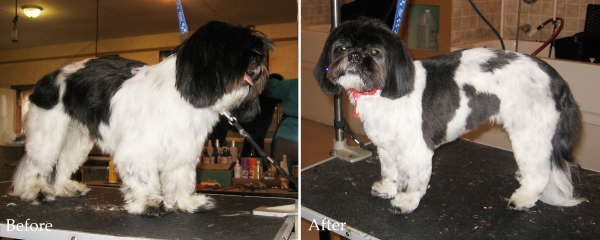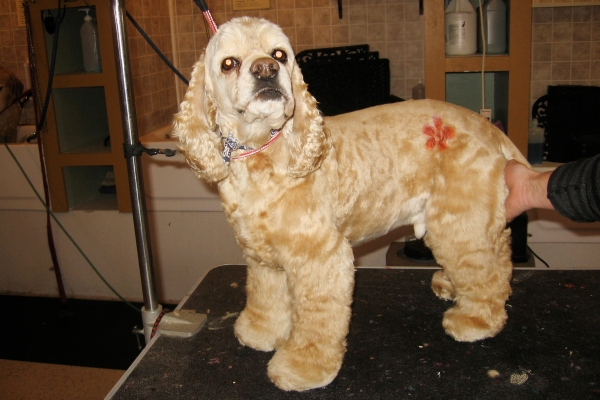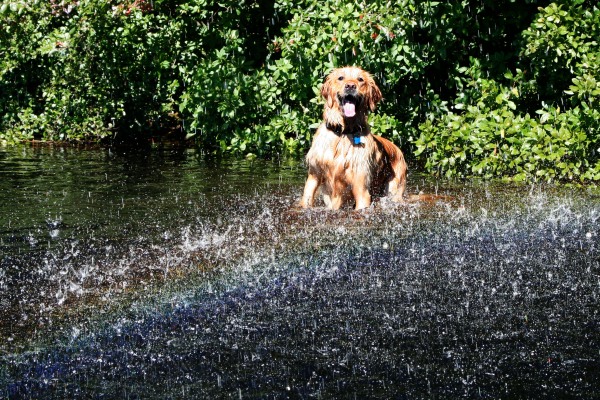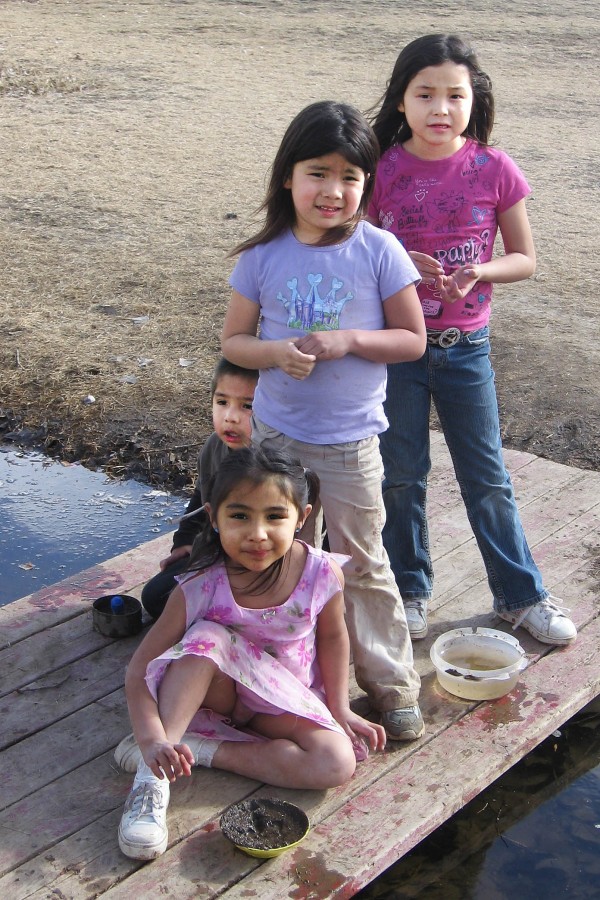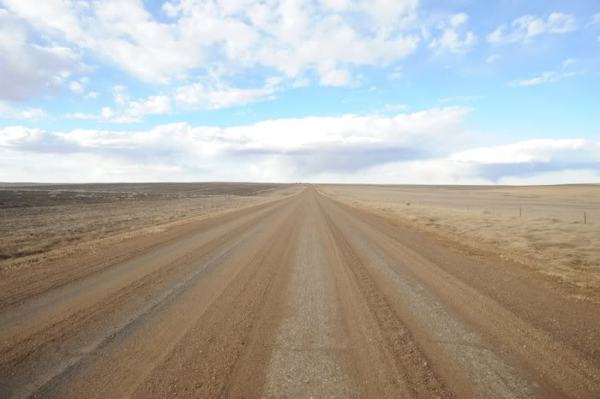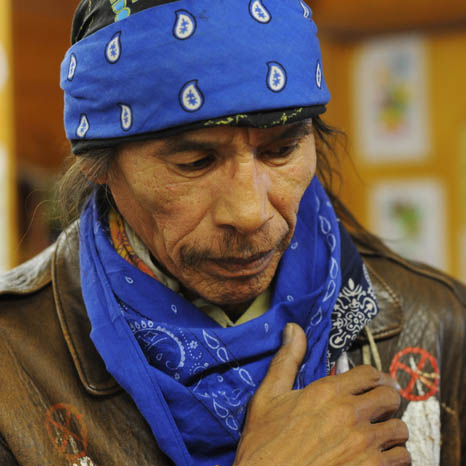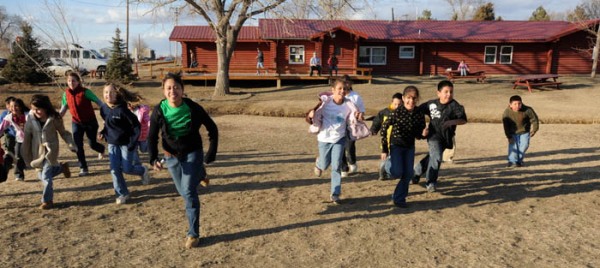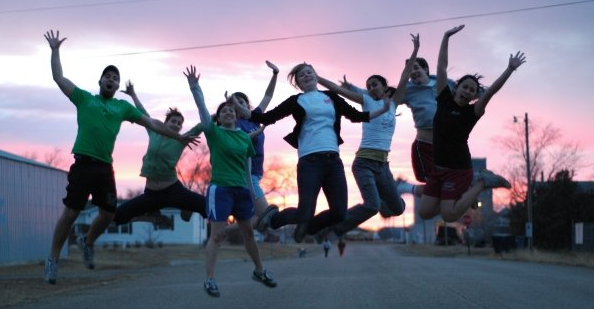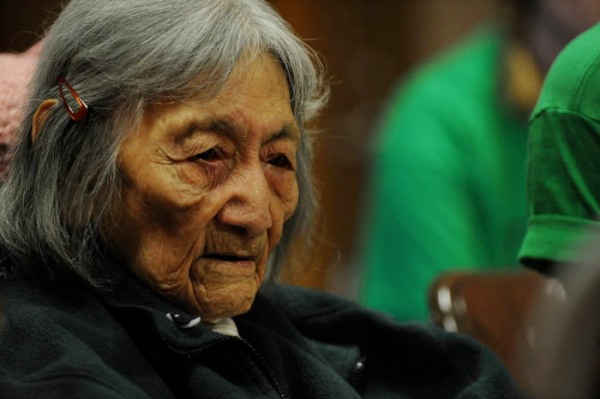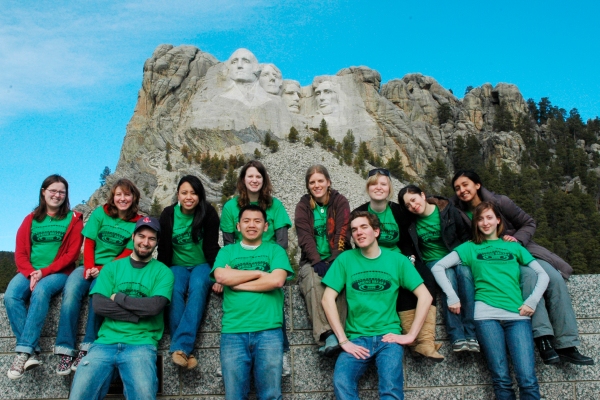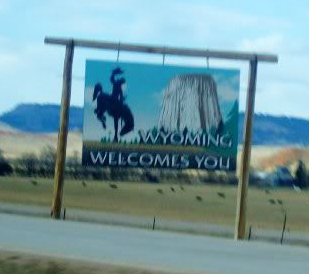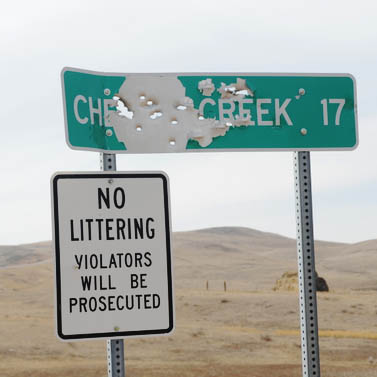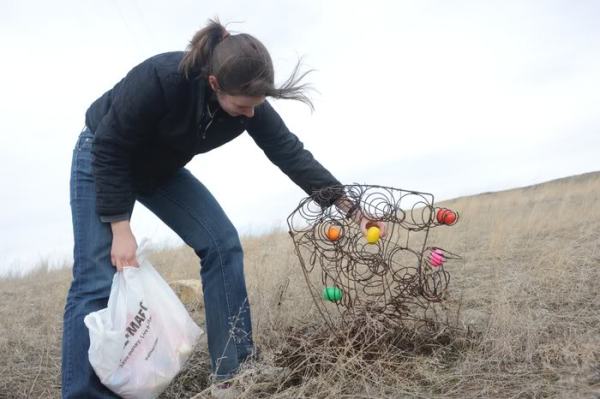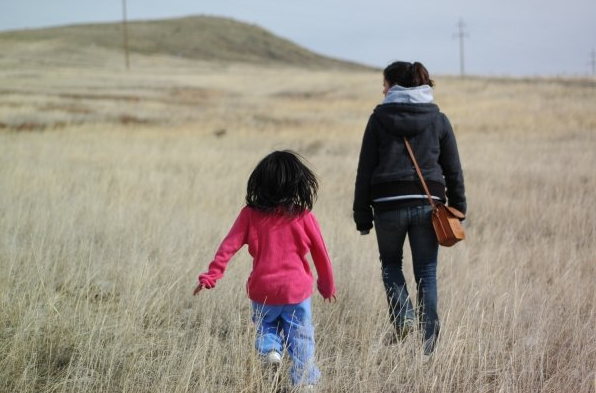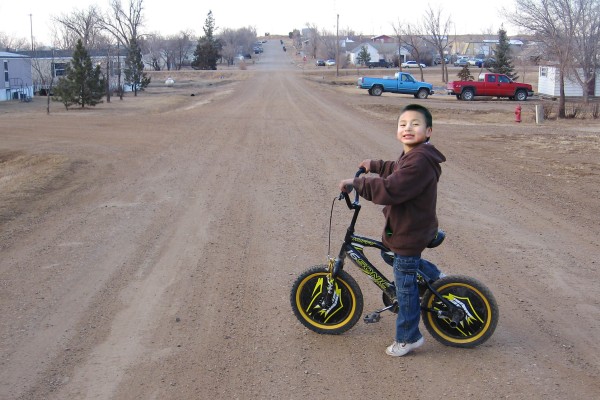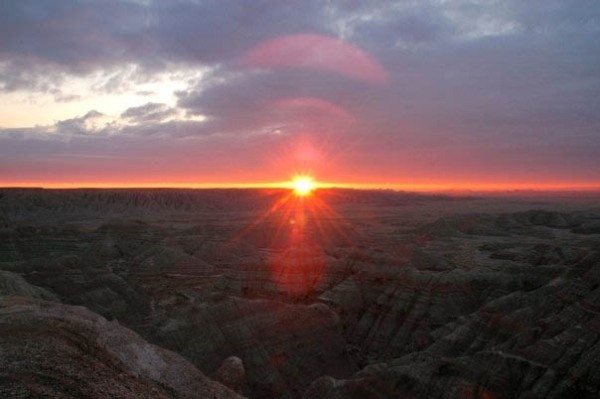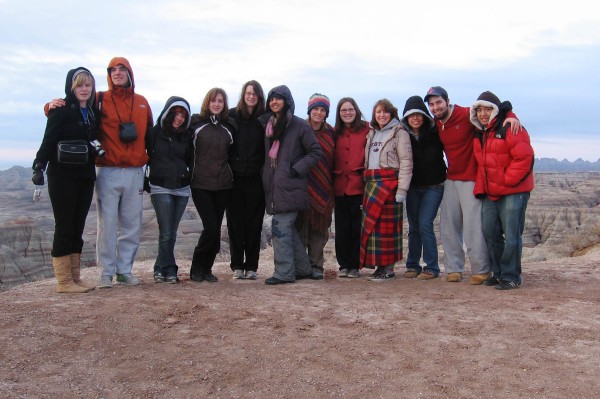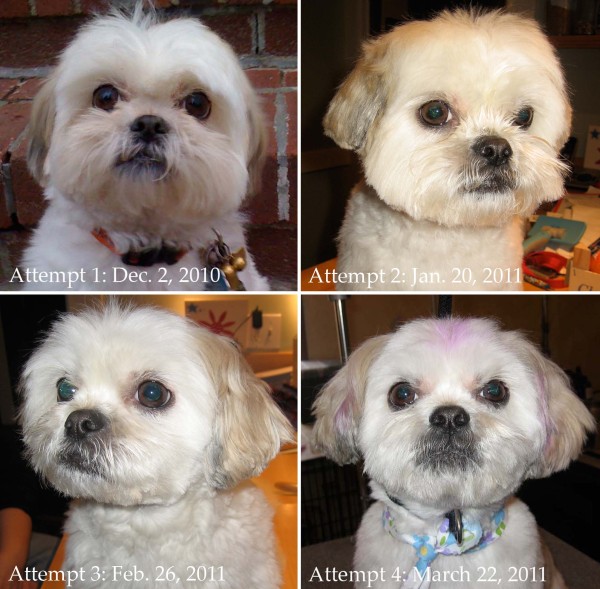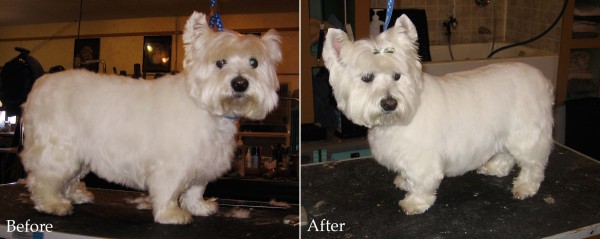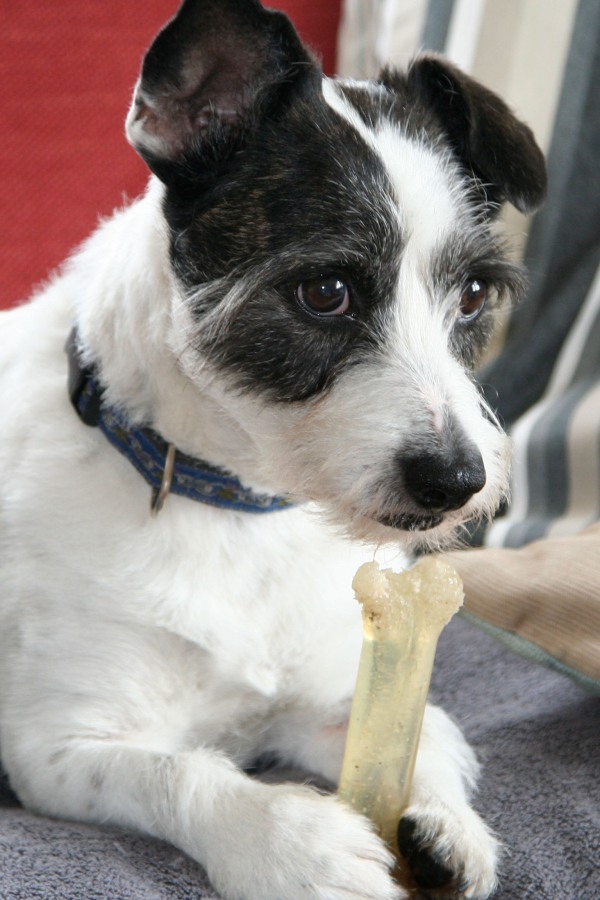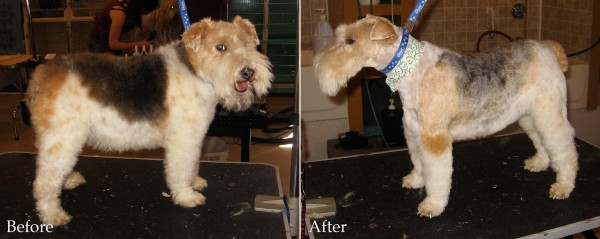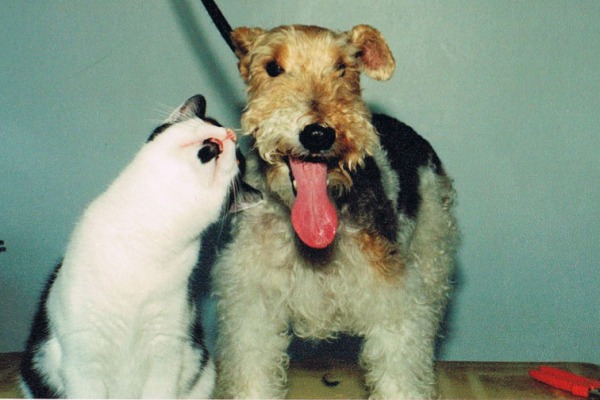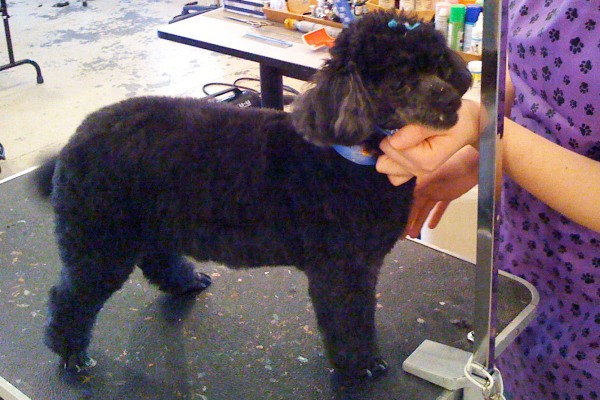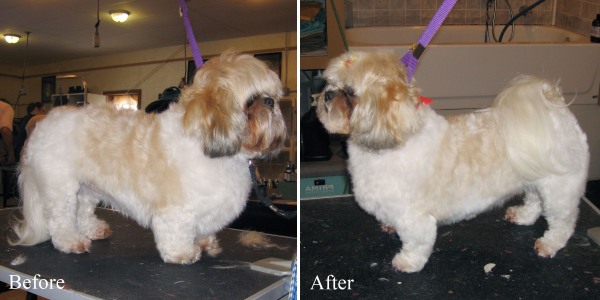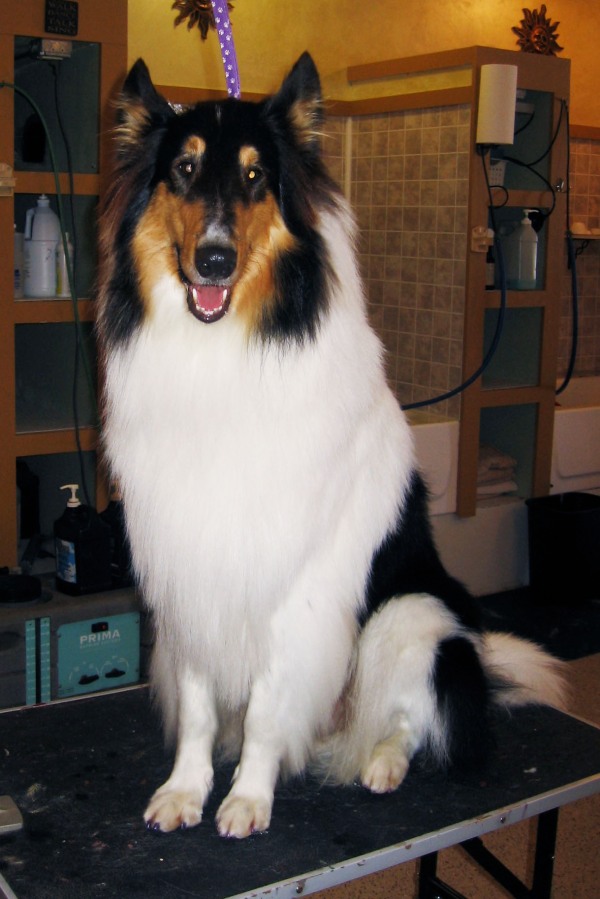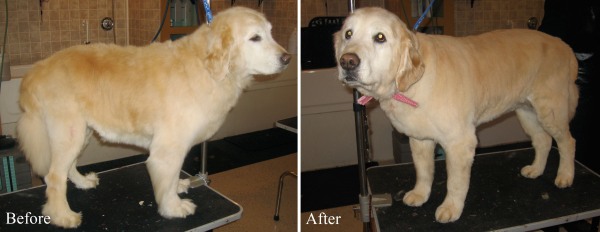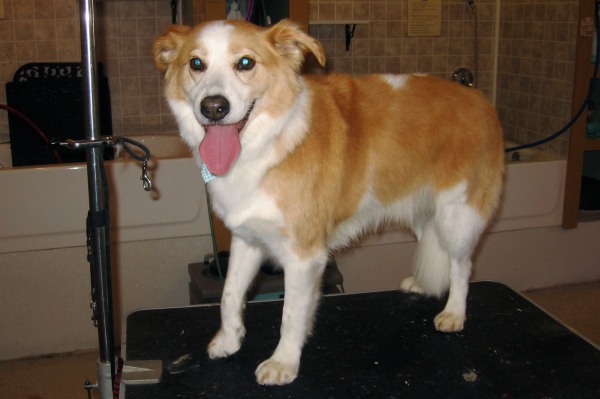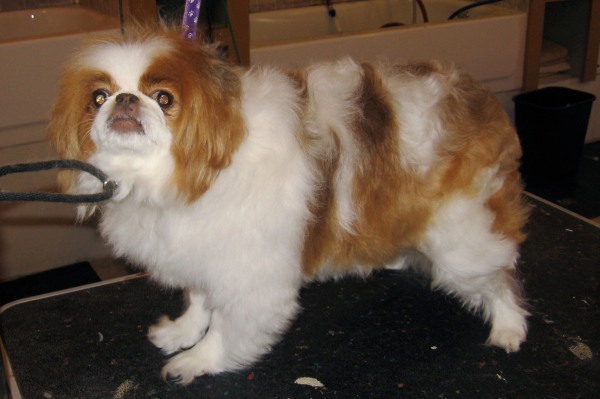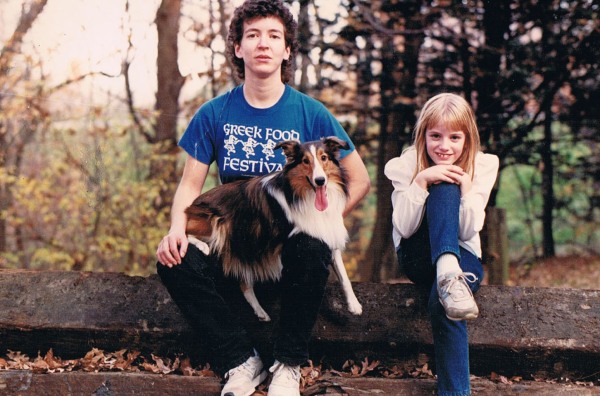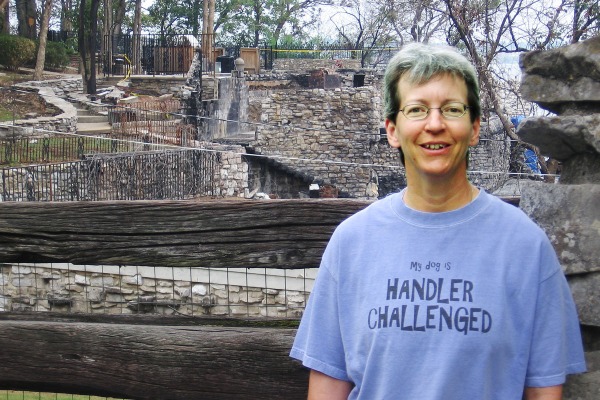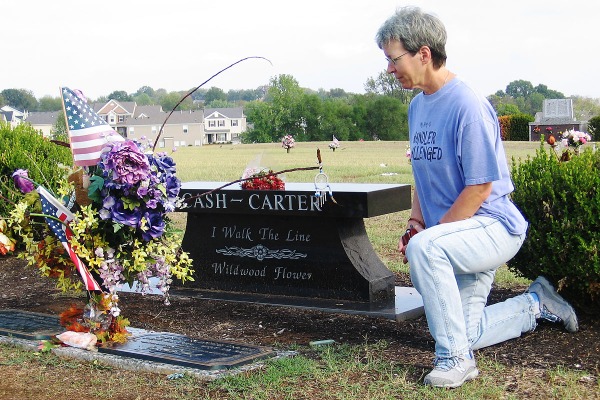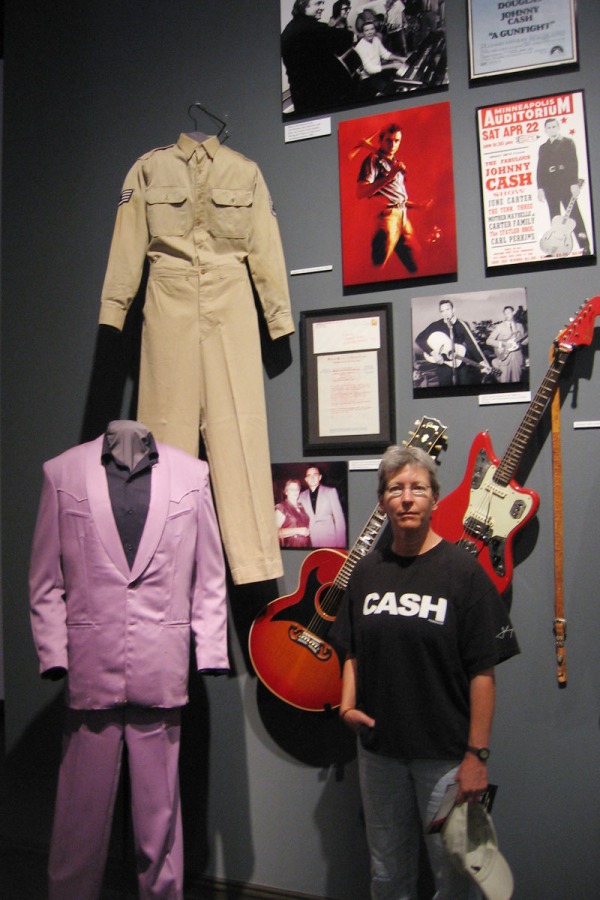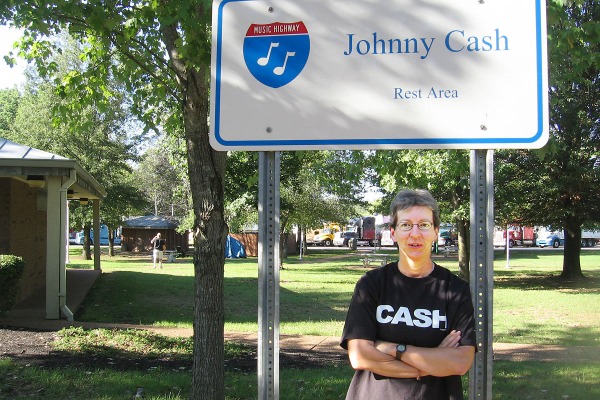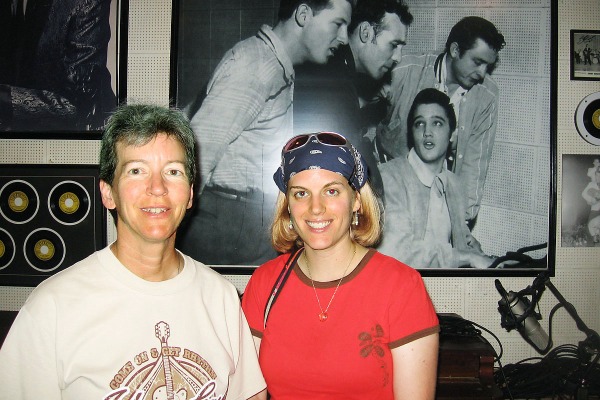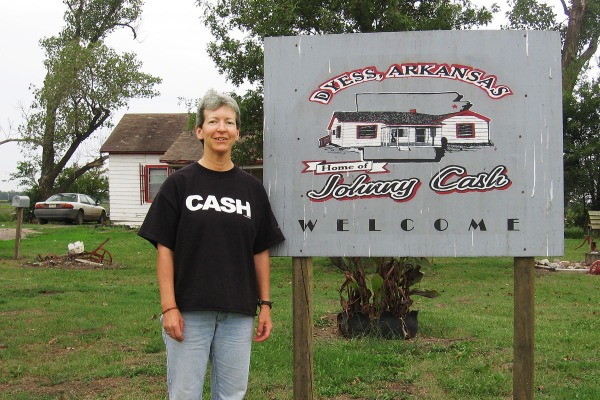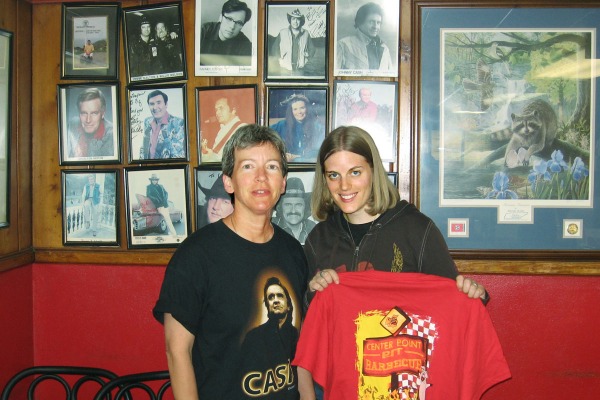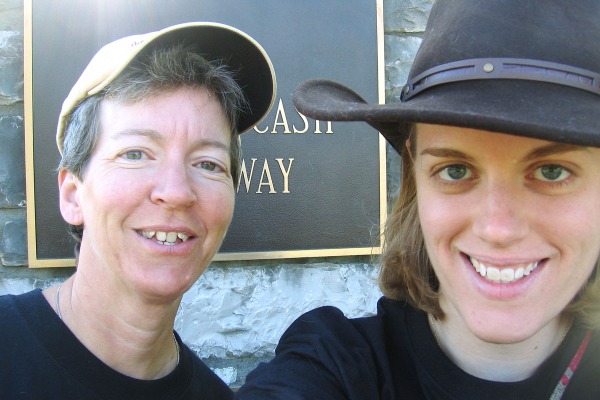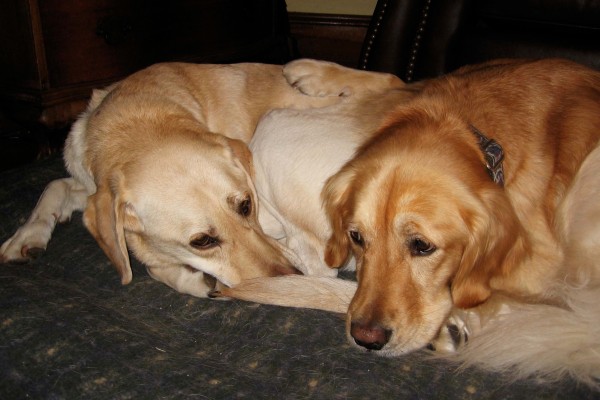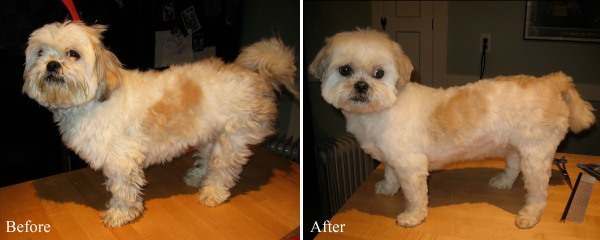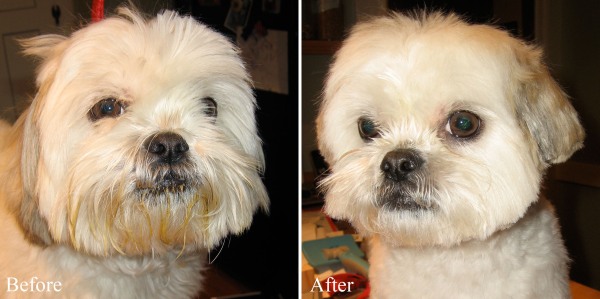And if Tom Brady was a dog, he’d be a… morkie?
I don’t watch football, and I’m not a fan of the New England Patriots, but thanks to the gossip rags and the Boston Herald (is that redundant?), I do know who Tom Brady is. So when my neighbor’s sister asked me to groom her dog, who her husband named after the famous quarterback, I expected her to bring me something big and broad-shouldered, like a great dane or a mastiff. Instead, she handed me a morkie.
What’s a morkie, you ask? It’s one of those “designer breeds,” also known as a cross between two purebred dogs–in this case, a maltese and yorkshire terrier. I gotta say, though, his parents must have been giants, ’cause this dog is A LOT bigger than four to seven pounds–the ideal weight for both breeds.
I groomed Brady for the first time on New Year’s Day using a blue snap-on comb, which looked fine. But when I got to his face and legs, I kind of choked. And because my New Year’s resolution was to think more positively, I’ll only say that my efforts were admirable.
I groomed Brady for the second time a few weeks ago. He had four months worth of hair growth, and–thanks to the 80-plus inches of snow that buried Massachusetts this winter–plenty of mats. I brushed out the tangles on his back and clippered the ones around his groin and behind his ears, but the snarls on his legs were too tight, even after trying to tease them out with the high-velocity dryer. I attempted to clipper them with a blue snap-on comb, and then a purple, but I ultimately ended up shaving him down with a 7F blade. His four-year-old (human) sister didn’t even recognize him when he was finished.
Although I was reluctant to take him so short, I actually think he looked better using a 7F than a blue snap-on comb. Both Yorkies and malteses have silky drop coats that are supposed to be kept long. Such coats require a tremendous amount of upkeep, though, which is impractical for the average pet owner. Hence, most people opt for a “teddy bear” style, which is when the body and muzzle are cut very short. In my experience, silky coats look good when they’re long and when they’re short, but when they’re in between, they just look kind of scruffy.
As for Brady’s face, I think I showed remarkable improvement, particularly when you compare the job I did in January to the one I did in April. No, it isn’t perfect. But at least the poor guy can see now!
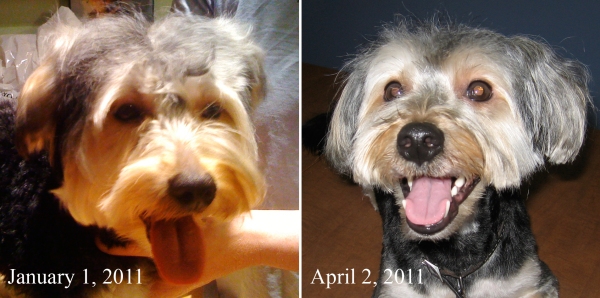
Attempt 2 looks a lot better than Attempt 1, and it isn't just because I upgraded to a better camera.
Speaking of before-and-after photos, here are a couple from school.
This is Zorro, who happens to be the most well-behaved dog in the world. Seriously, he never moved. It was like grooming a stuffed animal.
And here’s Angus, a very charming golden retriever.
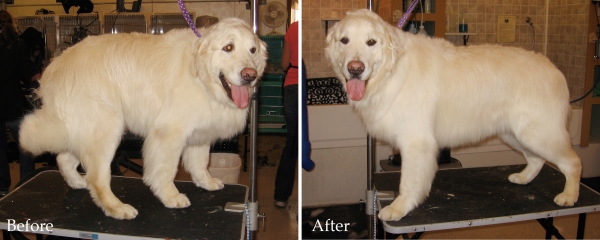
Yeah, I can't tell much of a difference, either. But he's a golden retriever. There's not much to do.
Remember my buddy Harrison?
And here’s Harrison’s cousin, Dakota, a very sweet sheltie who lost A LOT of undercoat.
And finally, Bailey, my golden retriever, turned six on April 8. Happy birthday, Boo Boo!
Bury my heart at the Cheyenne River Reservation
This post is dedicated to Dan, Brendan, Dimp, Katie, Gabs, Steph, Jenn C., Eva, Colie, John, and Anna, and to the children of the Cheyenne River Reservation.
* * *
Earlier this month, as thousands of college students descended upon Daytona Beach and Cancun, I was visited by the Ghost of Spring Breaks Past. Three years ago, my editor at the university where I used to work asked me to write about the school’s Alternative Spring Break program. Thus I found myself South Dakota bound, speeding down I90 in a cramped 15-passenger van with 11 strangers, 22 bags of luggage, and a guitar.
We spent a week working with children of the Cheyenne River Reservation, an expanse that covers more than two million acres of South Dakota’s poorest soil. Indeed, a per capita income of only $7,463 makes it the single most impoverished area in the nation; more than three-quarters of its children live below the poverty line.
At the time of our trip, a nine-year drought had left the land parched, and the winds whipped mercilessly across the prairie as our van rattled down country highways riddled with potholes. Once we passed the state capital of Pierre, we didn’t see another gas station or convenience store until we reached the tiny community of Eagle Butte, nearly 100 miles away.
With a population density of only 1.3 people per square mile, the reservation doesn’t get many visitors. A three-hour drive from Mount Rushmore and the Badlands, it’s largely isolated from the outside world. No one bothers with cell phones; they don’t work. I turned mine off as soon as we left Pierre.
* * *
The 1,900-mile journey from Boston to Dupree was exhausting. We’d intended to drive through without stopping, but a blizzard in Buffalo waylaid our plans. A kindly rector at Trinity Episcopal invited us to wait out the storm in his church. He brewed us a vat of coffee, set us up in the nursery, and wished us safe travels. After he left, we entered the dimly lit sanctuary and sat silently in the wooden pews. On the other side of the stained glass windows, the wind howled and the snow swirled, but inside we were safe and warm. It was during this quiet moment of reflection that I knew this group of kids was something extraordinarily special.
* * *
We departed the next morning before dawn, after shoveling the church’s parking lot and sidewalks. Dupree was 1,400 miles away, but the roads–and the weather forecast–were clear, and we were rested and refreshed. The states passed by in a blur–Pennsylvania, with its snowbanks that reached my chest; Ohio, which served up the most amazing breakfasts at Canary’s Family Restaurant; Indiana, birthplace of Michael Jackson and Larry Bird; Illinois, where upon seeing a toll booth sign, a sleep-deprived Cherisse blurted, “What does Ill-i-no-is mean?”; Wisconsin, with its midnight cheese stop; and Minnesota, which I slept through.
We crossed into South Dakota at sunrise and pulled into a gas station. As the kids ran inside to replenish their supply of junk food, I stood shivering in the frigid morning and gazed across the surrounding fields. Ohio had done nothing to prepare me for the flatlands of South Dakota. Acres and acres of nothing stretched before me, as far as the eye could see. I was less than 2,000 miles from home, but standing under the exposed South Dakota sky, it felt like two million.
* * *
After stocking up on groceries in Pierre, we began the final leg of our journey. The strip malls and cookie-cutter houses quickly gave way to farms, until they, too, disappeared into the barren landscape. With the exception of a few abandoned shacks, we saw no signs of civilization until we rolled into Dupree and pulled up to the Sioux YMCA, our home for the next week.
Our site hosts, Claudia and Wynema, showed us around the building and immediately set us to work washing walls and programming the YMCA’s four computers. A few short hours later, the children arrived for their after-school program, and we found ourselves involved in a rowdy game of freeze tag.
Those who know me–and readers of this blog–may be surprised that I chose to chaperone a service trip that involved working with children. But I very much wanted to visit a reservation, and out of the 30 trips from which I could choose, this one called to me most. And so for one of the first times in my life, I trusted my instinct without question. “I’m going to South Dakota,” I told my editor. “What about New Orleans?” he suggested. “They’re doing Hurricane Katrina clean-up.” But I remained resolute. “No, South Dakota,” I said. “I want to go somewhere that isn’t on the news every night–someplace… forgotten.”
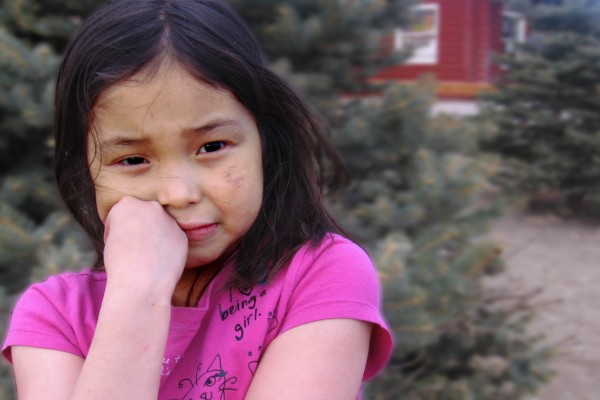
More than two-thirds of the Cheyenne River Reservation residents live on far less than one-third of the average American’s income.
Forgotten is a good way to describe the Cheyenne River Reservation–and the people who live there. With the exception of a few families, the population–two-thirds of which survives on far less than one-third of the average American income–is comprised of members of the Lakota Nation. The alcoholism rate among residents is a shocking 627 percent higher than the national average, and the high school drop-out rate hovers at 50 percent. Despite its rural setting, the community is plagued by gang activity, and violence–from vandalism to murder–is on the rise. Such dismal living conditions have contributed to feelings of hopelessness and despair, particularly among the youth. Teen suicide rates on the reservation are three times the national average.
Having researched these statistics prior to our arrival, I expected the children to be… less childlike and more like the stereotypical stoic Indian. But they were young–and, like so many youngsters–resilient. They tore across the dusty yard, shrieking with delight as we chased them. They stayed until the sun began to set, scampering home only after much prodding from Wynema. “They don’t like to leave,” she told us afterward. “Here, they’re safe. At home… they’re not.”
* * *
I slept well that night. The cot was more comfortable than my pillow-top mattress back home, and the wind howling across the prairie lulled me into a deep and dreamless sleep.
* * *
Each Tuesday and Thursday afternoon, the YMCA hosts a soup-and-social luncheon for the tribal elders. We helped prepare the hearty beef-vegetable soup while Bonita cut dough for frybread. A precursor to the funnel cake (or fried dough, as we call it in New England), frybread originated nearly 150 years ago, when the United States forced Indians onto reservations, away from their hunting grounds and farmlands. To prevent them from starving, the government issued them rations of white flour, processed sugar, and lard—the makings of frybread. It remains a dietary staple even today, a tradition that likely contributes to the growing epidemic of diabetes and obesity among Native Americans.
The elders and I watched in amusement as the kids slathered their frybread with peanut butter and Nutella. They’d burn off all that sugar soon enough, though; the children were due from school in just a few hours, and the games would begin anew.
We worked long hours that day. The Tribal Council met that evening, and we watched their children, even after the others had gone home. When we finally sat down to supper at 10 o’clock, we were surprised to find that none of us were really tired.
* * *
The next morning, we drove east to visit the elders who live at Eagle Butte Manor. Every Wednesday, YMCA workers organize a Bingo tournament for the elders, who play for hygiene supplies rather than for money. My partner’s name was Midge. She’d lived on the reservation her entire life, and had 10 children.
We played for more than an hour, the intensity increasing with each round. The elders focused intently on the game, their highlighters poised above their cards. At one point, a gentleman zoomed by the lobby on his motorized wheelchair. “Bingo!” he shouted, eliciting initial groans of disappointment among the players. By the time they realized it was a joke, he’d rounded the corner, cackling.
Midge and I won a round. She chose a toothbrush and toothpaste set as her prize. She planned to give it to her son. He had trouble with his teeth, she said, but he couldn’t afford to see a dentist.
* * *
That evening, we took a group of “Lakota Achievers”–members of a youth leadership program–to Eagle Butte to attend a college seminar that was being hosted by another group of spring break volunteers. Afterward, I saw Cherisse hugging one of the teenagers. She turned to me with tears in her eyes. “Her house burned down two years ago,” she said. “They’ve been homeless ever since.”
* * *
Thursday was our “free day.” We set off for the Black Hills before dawn and arrived at Mount Rushmore by mid-morning. The mountain was indeed a work of art, but I think Brendan accurately summed up what we were all thinking: “We took land that didn’t belong to us,” he said. “We took an entire mountain, and we carved our faces in it.”
Later, we stopped in Custer State Park, where we saw a herd of buffalo and played Frisbee on a frozen lake. I napped for about an hour during the drive back to Dupree. When I woke up, we were still on the highway. That’s strange, I thought, glancing at the clock on my cell phone. We should be on the two-lane road by now.
Puzzled, I peered out the window at the unfamiliar landscape. And then I saw the sign: “Wyoming welcomes you!”
“Are we in freaking Wyoming?!?” I yelled, waking my slumbering van mates.
From the driver’s seat, Dan gave a sheepish laugh. “Uh, we might have possibly missed a turn about 50 miles back,” he said. “I think we’re going to be late for dinner.”
* * *
I don’t think I shall ever forget Cherry Creek.
It sounds idyllic–like a town from the Lawrence Welk Show or A Prairie Home Companion. And while it’s true that Cherry Creek is a very small town–there are fewer than 400 residents–you’re more likely to hear about it on the evening news than a variety show.
Earlier in the week, we stuffed more than 700 plastic Easter eggs with candy, and on Friday we piled into the YMCA van and set off for Cherry Creek, where we planned to host an Easter egg hunt. Prior to our departure, Claudia warned us that we may be shocked by what we saw, but I don’t think any of us were fully prepared for what awaited us.

Despite its rural setting, the crime that plagues the tiny town of Cherry Creek is more urban in nature.
Like so much of South Dakota, the 35 miles that stretch between Dupree and Cherry Creek are barren but for the occasional tree. As Wynema expertly steered the van down the twisting roads, I marveled at the prairie’s stark beauty. That first morning in South Dakota, standing along the highway beneath that vast expanse of open sky unsettled me. By now, those feelings of isolation were familiar, and I found them to be oddly comforting.
I thought about the kids back in Dupree, particularly the teenagers who spoke so passionately of leaving the reservation to see the mountains, the ocean, the desert. The plains–with their razor-sharp grasses and dry, brittle soil–were all they knew. Few had traveled beyond Pierre, and many never would. Their world was small, their community smaller.
Without warning, we crested a small hill and rolled into town. With the exception of a few boarded up houses and trailers, their lawns littered with garbage and rusted-out vehicles, the place appeared to be deserted–and eerily so. We pulled up to a windowless building at the end of the street and unloaded the eggs from the back of the van. Women and children milled inside, patiently awaiting their monthly rations of soap, tooth paste, shampoo, and laundry detergent. While Wynema and Steph dolled out supplies, Jenn, Eva, and I headed outside to hide the Easter eggs along a hillside that overlooked the town.
The garbage was overwhelming: beer cans, broken bottles, food wrappers, cardboard boxes, tires, busted machine parts. Avoiding the piles of excrement–left by horses and dogs that freely roam the countryside–was like playing a complex game of hopscotch. As we tossed eggs onto the ground, our gazes met across the soiled landscape, and our eyes communicated what we couldn’t say out loud. Here? We’re going to let the children hunt for eggs in this filth?
But in the end, that’s what we did. They sprinted up the hillside, gleefully snatching the colorful eggs from the trash. It was all over within 10 minutes, and the children returned to the parking lot, their eyes shining as they clutched their bags of loot. I remained at the top of the hill for a few minutes longer, blinking away tears. That such unadulterated, unabashed joy could exist amidst such poverty, that these beautiful hills could be marred by such waste–it nearly broke my heart.
Further down the hill, the kids were talking to one of the townspeople, a 19-year-old who, for purposes of privacy, I will call A.J. Clad in baggy pants and a blue flannel shirt, he stood with his arms crossed against his chest, a blue bandana tied around the knuckles of his left hand. He was a Crip, he told us, but prison had reformed him. He rapped for us–about growing up in Cherry Creek, his family, what he’d done on the streets. He wanted to join Job Corps and sell his music, he said, so he could come back home to help his siblings.
But A.J. didn’t get to do any of those things. Six weeks later, police arrested him for intentionally setting a house fire that killed his 2-year-old brother and 4-year-old sister. He was sentenced to life in prison the following year.
An article in the Rapid City Journal quoted A.J.’s defense attorney as saying he grew up suffering “horrendous treatment” by his mother, whom she said abused him, introduced him to alcohol, and encouraged him to join a gang. The boy had no semblance of family life and basically grew up in various institutions from the time he was 10, she said.
I have pictures of the children who died in the fire. I have pictures of A.J. Three lives, extinguished. I weep for them.
* * *
We returned to Dupree that evening a little quieter than usual, and the children were waiting for us. But we didn’t send them home, not even after the sun went down. Instead, we let them walk us through town. The little ones ran ahead, while the teenagers hung back and chatted with us. One little boy tugged Brendan’s hand and pointed to a green house across the street. “We used to live there,” he said. “There was food.”
It was well after dark by the time we returned to the Y. Joining hands, we formed a huge spiral hug. And then, without a good-bye, the children were gone.
* * *
We left Dupree at three o’clock the next morning. I was the only one who’d bothered to sleep that night, and so I drove us the 140 miles south to the Badlands. We arrived just in time to watch the sun rise over the canyon.
* * *
In less than two months, Brendan and Anna will graduate. The rest of the kids (who aren’t really kids anymore) are scattered across the country. Dan works for Boeing in St. Louis. Cherisse landed her dream job working for the Philadelphia Eagles’s Youth Partnership Program. Gabby and Eva are Americorps volunteers in Washington, D.C., and West Virginia. Steph is teaching English in Korea, and Jenn C. works for the Institute for Women’s Policy Research in Washington D.C. Katie and John chose to stay in Boston, while Colie randomly ended up in Champaign, Illinois. And I, as everyone knows, ditched journalism and went to dog grooming school.
Much to the surprise of nearly everyone who wasn’t on the trip with us, the 12 of us have remained close. In fact, I celebrated my last day of work at the university by hosting an ASB reunion at Jenn’s parent’s house on Cape Cod. Everyone but Jenn C. attended. We cooked incredible meals and built a bonfire in the backyard and stayed up until dawn playing Mafia. We watched the herring run in Brewster and ate fried clams along the pier in Provincetown. And at sunset we climbed the dunes along the National Seashore and stood in rapture as the wind blew in from across the Atlantic. I could think of no better way to end my career at the university than to spend a weekend with the people who made it all worth the experience.
Thank you, my beautiful Lakota Achievers. Let’s go back soon, shall we?
To learn more about volunteering at the Cheyenne River Reservation or to make a donation, visit the Sioux YMCA Web site.
Finding Nemo’s perfect haircut
It all started back in December, when I came home from school one afternoon and abducted my neighbor’s shih tzu, Nemo. I didn’t have a grooming table, so I plunked him on the kitchen counter and went to work. I’d only been in grooming school for five weeks, and I’d barely done any haircuts. But Nemo was getting ready to spend six weeks in Vermont while his family traveled to Cambodia, so his moms asked me to “tidy him up.” Looking back at the photos, I’m not entirely sure you could say that’s what I did, because I honestly can’t tell much of a difference between the before-and-after pictures. But it was my first attempt at grooming a dog outside of school (aside from the butcher job I did on my golden retriever at Thanksgiving), and I was overly cautious. I used an orange snap-on comb on his body and scissored his legs. By the time I got around to his face, the poor guy had been on the counter for nearly three hours, and his restlessness–combined with my inexperience–resulted in a less-than-stellar final product. But hey, I give myself props for trying.
My next attempt at grooming Nemo came in January, after he’d taken up the hippie lifestyle in Vermont. This time I used a blue snap-on comb on both his body and legs. I also scissored his legs and face. The second groom was far better than the first, but I had a long way to go, particularly on his face. It also took about three hours to do.
The third attempt took less time, most likely because I didn’t scissor his legs at all. Also, halfway through, Kathy came home with her sister, 13-year old daughter, and four- and six-year-old niece and nephew, so Nemo and I were both a bit distracted. Kathy asked me to round out his face–I believe, her exact words were “get rid of the chops”–but try as I might, I could not get it to look right. I used an orange snap-on comb again, leaving more length on his body. I also didn’t touch his ears because Kathy wants to let them grow out.
The next time I groomed Nemo, I took him to school with me. This in and of itself presented a huge advantage because A) I could bathe him with the Oster Power Bather and the Prima, thereby ensuring he was thoroughly clean B) I had access to whitening shampoo and conditioner, C) I could dry him with a high-velocity dryer and brush him while using the stand dryer, tools which brought out the natural shine and silkiness of his coat, and D) I had access to an actual grooming table and CURVED(!) scissors. Oh, and most importantly, my instructors were on hand to answer questions and give feedback. In total, it took about two hours from the time I put him in the tub to the time I finished. I used a blue snap-on comb on his body and scissored his legs with CURVED(!) shears. Jaque’s only feedback for his body was to tighten his rump, inner legs, and shoulders. I called her back over when I was ready to tackle his face. She did one side, and I did the other.
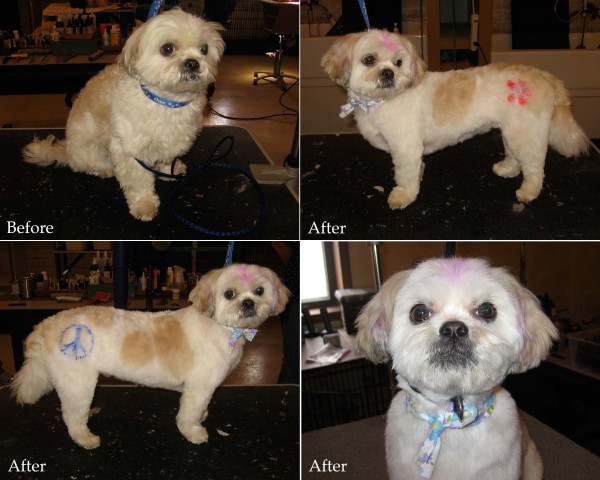
Attempt 4: Definitely my best work yet. It's amazing what a difference good product and the right equipment makes.
I was pretty shocked when I put together the photo compilation below. Those are some pretty drastic improvements over four months.
Disclaimer: Ordinarily, I don’t go for hair color, but Nemo’s sister Leah loves it, so I gave him some stencils and lots of sparkles. Maybe I’ll paint him like a clownfish for Halloween this year.
In other news, we’ve been focusing a lot on terriers at school lately–probably my least-favorite group. I’m really struggling with the patterns. But here are some examples of my recent work.
My first attempt at grooming a Westie.
This is Kippy, a Parson Russell mix who belongs to my friends Shona and Robin. Kippy is a “special needs” client. He typically wears “facial attire” when I groom him.
My first attempt at grooming a wire fox terrier.
And speaking of wire fox terriers… back in college, I used to take care of one named Reggie. He was buddies with my cat, Edward. So, for the sake of nostalgia, here’s a picture of the two of them hanging out at Designer Dog, the shop where I used to work. See, Edward thought he was a dog even back then.
- Edward and Reggie, circa 2002.
I’ve outgrown my scissors.
My grooming instructors warned that it would happen, but I didn’t believe them. The first time I held my eight-inch Dubl Duck straights in my hand, my thumb poked through the handle and the scissors hung limply from my fingers. Subsequently, each time I attempted to close the blades, the shears slipped over my knuckle to rest against the fleshy part between my thumb and forefinger–and believe me, it’s impossible to cut anything when that happens.
The awkwardness I experienced upon attempting to actually use my shears shouldn’t have been all that surprising, though, because as it turns out, I’ve been holding scissors incorrectly my entire life. (Clearly, my elementary school art teacher failed me. But then again, he was legally blind, so I suppose it isn’t entirely his fault. What’s that, you ask? Who hires blind art teachers? Catholic schools, that’s who.) But anyway, yeah–you’re supposed to hold scissors with your thumb and ring finger, not with your thumb and index finger, which is how I’d always done it. Also, you’re supposed to use only your thumb when opening and closing your blades to help reduce hand fatigue and carpel tunnel. Who knew?
I wonder if my failure to correctly hold scissors has anything to do with being left-handed, which is how I justify the way I tie shoes. Yes, I still use the “bunny-ear” method–what’s your point? Not to get all martyr-like, but it isn’t easy to be a “lefty” in a “righty” world. When my parents tried to teach me to to tie shoes the traditional way, it only resulted in tears and frustration. I also blame my left-handedness on never learning to knit (despite my grandmother’s best efforts) and nearly flunking the knot-tying portion of my high school outdoor education class. Come to think of it, it’s likely the reason I hate math, and it’s probably responsible for natural disasters and world hunger, too.
What was I talking about again? Oh, right. Scissors.
So there I was at grooming school, wrestling with an ungainly pair of shears and silently cursing my intense clumsiness. The scissors were only eight inches long, but I may as well have been trying to hold a javelin. (Incidentally, I’ve never actually held a javelin, but I imagine it would be quite ungainly. I did, however, throw a tomahawk one year at the Ohio Pawpaw Festival.) It doesn’t help that my hands are approximately the size of a hobbit’s, so even when I fully extend my thumb and ring finger, the blades don’t open very far.
It isn’t easy being me.
I ended up practicing a lot at home using a duster. One night–much to Jenn’s dismay–I scissored through two entire episodes of Law and Order: Special Victim’s Unit. By the time I finished, the couch, my clothes, and my cat were all covered in an itchy dusting of lamb’s wool. I was told that, henceforth, I’d be honing my scissoring skills on the back porch–or else.
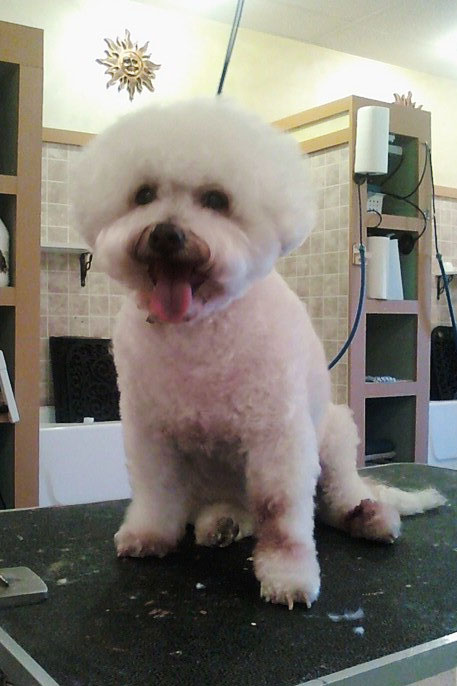
This is Victor. He used to have a sister named Victoria. I saw the movie "Victor/Victoria" when I was eight, which prompted the inevitable question: Mom, what's a homosexual?
I’ve been grooming for nearly five months now, and despite my initial struggles, I’ve gradually gotten to the point where my eight-inch shears are just not big enough. The shorter your blades, the more cuts you need to make. And when you’re scissoring a tall dog like a poodle or a long-legged terrier, the fewer swipes you take, the better.
Luckily, there are plenty of extra pairs of shears at the school that I can borrow. But graduation is less than a month away, and that means I need to begin investing in my own equipment–again.
Most recently, I discovered the joys of curved shears, which proved to be tremendously helpful in cutting a bichon‘s head the other day. Curved blades are hugely beneficial when scissoring topknots, faces, ears, feet, and rumps, and when turned upside down, they help set angulation, tuck-ups, and underchests. I want some.
Back in November, I attended the New England Pet Grooming Professionals (NEPGP) expo in Warwick, Rhode Island. I’d only been in school for a few weeks, and I was completely overwhelmed by the selection of vendors. Despite encouragement from Susan, I decided not to purchase any scissors at the show. I’d just made a tuition payment, in addition to buying all of my equipment for school. Besides, I was so new to the game that I couldn’t tell a good pair of shears from a bad one–at that point, everything felt awkward.
Now I’m kind of irritated that I didn’t buy when I had the chance. My frustration was further elevated when I learned that I’ll be out of town during the NEPGP summer expo. However, New Jersey’s Intergroom is happening the weekend after I graduate, and that means Jenn and I will be taking a road trip to the Garden State. The event features more than 150 vendors and 30 seminars, in addition to a number of grooming competitions. I’m not ready to compete by any stretch of the imagination, but I’m looking forward to watching.
In other news, I shaved down a golden retriever last week, at the owner’s request, of course. I’ve done golden shave-downs before, but always with a snap-on comb. This time I used a 7F blade–again, per the owner’s request. I don’t especially like the look. What do you all think?
I’m just like Edward Scissorhands, without the bad hair
My grooming school instructors encourage us to “step away” from the table every so often so we can view our dogs from a different perspective. By taking a few steps back, we are more likely to notice where we need to cut, thin, or blend. It also allows us to view the dog in its entirety, rather than focusing on one small area.
This month we enter into the final stretch of school, and to say that I’ve worked myself into a mild state of panic would be an understatement. I’m not ready to leave. I can barely carve a pattern into a dog’s coat, we’re still not trimming faces–the other day I couldn’t even get all of the mats out of a maltese. And then there’s that whole prospect of finding a job after I graduate. What if no one wants to hire me?
I’ve been so fixated on what I can’t do that I tend to forget all of the things that I can. Four months ago, I couldn’t even correctly hold a pair of scissors in my hand. I didn’t know how to trim a dog’s nails, I fumbled every time I picked up my clippers. Forget using my thinning shears–they’re right-handed, I’m left-handed, and they won’t cut a single hair if I hold them in my dominant hand. That’s right–I’ve been mucking out undercoat, blending clipper lines, and scissoring feet with my weak hand. It was pretty awkward at first, but I’ve gotten to the point where I can hold my straights in my left hand, thinning shears in my right, and simultaneously scissor with both. Just call me Edward Scissorhands.
The following section is an attempt to remove my head from my backside and take an impartial look at everything I’ve accomplished during the past few months–in other words, it’s time to take a few steps back to gain a fresh perspective.
This is Zoe, the first poodle I groomed. She received a “standard” poodle cut, which involved shaving her feet and face and giving her a topknot. Zoe has an adorable snaggletooth.
Despite her “mature” age, Chloe the shih tzu was a hyper little thing–as toy breeds tend to be.
It took me more than an hour to muck out the undercoat and remove the mats from Rocco the collie.
Clippering a golden retriever‘s coat helps reduce shedding. Winnie comes in every few weeks for a shave-down.
Winnie’s feet were extraordinarily hairy.
Poor Jack the border collie puked all over the table when I was trimming his back nails. I didn’t take it personally, though.
Like most long-legged terriers, Charlotte the airedale is persnickety when it comes to touching her legs or feet. She’s also been known to snap when having her nails trimmed. This presents an interesting–but hardly uncommon–challenge.
Benny was one of three dogs I groomed on a recent Tuesday. My speed is definitely picking up.
I had a lot of help grooming Scootch, mainly because I’d never worked on a Japanese chin, and he was my last dog of the day.
Savannah was one of three dogs that I groomed on a recent Saturday. I’ve gotten pretty fast at grooming golden retrievers. It’s a good thing they’re a fairly common breed.
Dear companies that keep mailing me shit about babies:
Lately my mailbox–my real one, not my cyber one–has been inundated with advertisements for expectant mothers. It’s true that I gained quite a bit of weight in the past nine months, but I think it’s really insensitive of you to assume that it’s because I’m pregnant. Did it ever occur to you that maybe I’m just a fat ass? Yeah, who feels like a jerk now?
If you ever bothered to read my blog, you’d know that I’m clearly unfit to be a mom because I click my tongue at children, and poop makes me vomit. You’d also know that I quit my job to groom dogs–not to expand my carbon footprint by creating a whole new human being. I mean, if you had any brains at all, you’d send me something useful, like a Pet Edge catalogue.
The upstairs neighbors have started to gossip, and I’m pretty sure the mail carrier thinks I’m a huge slut because I’m not married. And even though I’ve told her time and time again that kids are most definitely not in my future, my mom is all, “But you’re getting all of this baby stuff in the mail. Maybe the universe is trying to tell you that you should give me a grandchild before I die.” To which I say, “You know, if you were so hellbent on living out your old age with a bunch of fat grandbabies on your hip, maybe you should have had more than one kid. Because it’s kind of impractical to pin all of your hopes and dreams on your one and only child.”
To further complicate matters, Jenn is bragging to her family that she’s accomplished the physiologically impossible and managed to knock me up, and her parents are all “Sláinte! Let’s buy you a Saint Gerard Majella medal and register you at Gymboree!” and her sister–always the practical one–is like, “Neither one of you has a job. How are you supposed to raise a kid?” She’s such a killjoy.
Seriously, baby companies, you’re kind of screwing with my life right now, and I really don’t appreciate it.
So, to reiterate: I am not pregnant. I am not a nursing mother. I don’t care about lemaze classes or disposable diapers, which I’d never use even if I had kids because–hello, 450 years from now it will still be sitting in a landfill, nasty as ever. I think people who shop at Gymboree are creepy, and I would never, ever spend almost $1,100 on a freaking stroller. I don’t like the Wiggles or Elmo or Teletubbies–except for the purple one who Jerry Falwell claimed was gay.
Please, baby companies. I’m begging you. Cease and desist. Immediately. Before things get really out of hand and the folks from Miles Kimball find me.
On a completely unrelated note, did anyone else happen to catch the resemblance between Augra, a muppet from Jim Henson‘s 1982 film The Dark Crystal, and Placegarden Malachy, the Pekingese that won best in toy group at the Westminster Kennel Club Dog Show?
Keeping the faith is a lot easier to do when you’re Billy Joel. Or, you know, Jesus.
I’m not gonna lie. The past couple of weeks have pretty much sucked, and keeping my New Year’s resolution has proven to be next to impossible. It all started around Christmas, when Jenn got a sinus infection. Followed by an adverse reaction to a gynecological procedure. Followed by a concussion. Followed by the stomach flu. Followed by being laid off by the company that hired her exactly two months ago. And yes, for those keeping track at home, this is the third time Jenn’s been laid off in the past 14 months, and the second time in the past four. And the moral of the story? Social workers get the short end of the stick, kids, so do yourself a favor and study something super useful–like journalism.
Needless to say, we’re both a bit stressed out right now. Case in point? It’s one-thirty in the morning, and I’m still wide awake. Even though I know that one has absolutely nothing to do with the other, I can’t help but wonder if I’m somehow being punished for having quit my job at the university. You see? a devilish voice in the back of my mind whispers. This is what happens when you behave irresponsibly. You never should have resigned. Now you’re both going to be living on the streets and your dogs will have to eat out of garbage barrels. Which, come to think of it, they probably wouldn’t mind so much.
This logic is, of course, flawed. Before I resigned, I made sure that I had an entire year’s salary in savings, and I’ve supplemented those savings with freelance writing gigs and other odd jobs. Jenn will qualify for unemployment, and if God forbid we get into trouble, I know our families will help us out. But I’m willful and stubborn, and the mere notion of asking for help feels like a big, fat failure.
On top of this, I’m really beginning to panic about my impending graduation from grooming school, which is only two months away. That’s right, they’re going to set me loose in less than 60 days, and I can’t confidently groom anything expect maybe a golden retriever. And that’s on a good day. We still aren’t allowed to do faces, and I cut a nail too short at least once a day. Last week Susan told me that the hair between my dog’s toes wasn’t short enough, even though I’d taken extra care to clipper the dog’s pads and I thought it looked pretty darn good at the time. I still don’t know which blades to use, or when to use a snap-on comb instead of a finishing blade, and two weeks ago it took me three hours to groom the neighbor’s shih tzu. Which brings me to the ultimate question: how the hell am I ever supposed to earn a living doing this, exactly?
Jenn has decided that she wants to open a private practice, which totally makes sense, given that she’s been laid off so many times, but now we’re both talking about working for ourselves, which means no health insurance, no built-in vacation or sick days, no 401Ks or flex-spending accounts. Hell, we won’t even be paying into social security.

In his 1933 inaugural address, Franklin D. Roosevelt said, "The only thing we have to fear is fear itself." Hrmph. Easy for him to say--HE had a job. I mean, so what if he took office in the midst of the Great Depression?
A few weeks ago on lecture day, Susan recommended that we read Napoleon Hill, who wrote a series of personal-success books, including Think and Grow Rich and Napoleon Hill’s Keys to Success: The 17 Principles of Personal Achievement. I’ve always been pretty skeptical about the whole motivational speaker, self-help movement, but I took notes during Susan’s lecture anyway. “According to Hill,” Susan said, “ninety-eight percent of people have few or no resolute beliefs, and this alone puts true success firmly out of their reach.” Furthermore, she continued, 90 percent of getting a business started is motivational–in other words, it’s all about your thoughts, dreams, goals, and visions. Only 10 percent of starting a business is actually about actions–skills, techniques, and how you implement them.
I thought about this earlier today during a discussion with Jenn. I was feeling extremely discouraged, hopeless, and overwhelmed, which always makes for a pleasurable afternoon. “I’m freaked out over money,” I confessed. “And I’m tired. I feel like the past year and half has just been punch after punch after punch. When is it going to stop?” “Everything’s going to work out,” Jenn said. “Yeah?” I demanded. “How? I’m in school, you’re unemployed, we both want to start our own businesses, and I can’t even groom a dog without Susan coming over and pointing out everything I’ve done wrong.” “You just need to have a little faith,” she said. “Jesus, Vic, don’t you believe in anything? A higher power, a guardian angel? How about yourself?”
I shrugged. I’m fairly indifferent toward organized religion, and I’m not sure how I feel about guardian angels. I’ve never been very spiritual. I don’t pray or meditate, and every time someone tells me to relax and focus on my breathing, I get nervous that I’m doing it wrong. That’s right, I don’t even know how to breathe. I tend to rely on myself, my family, and my friends in times of crisis, and as for believing in myself–well, let’s just say I’m working on it.
Jenn’s right about one thing, though: I am crippled by fear. And because I don’t know how to overcome it, I try to escape it by eating or sleeping or marathoning episodes of Buffy the Vampire Slayer on Netflix. Deep down, I think I know that things will work out–that my grooming skills will improve and I’ll open a shop someday. I think a small part of me even believes that one day I’ll be a writer again. But in the meantime, I’m really scared.
Everyone who goes to Vermont comes back a hippie, including the neighbor’s shih tzu
Our landladies Karin and Kathy, who also happen to be our dear friends and upstairs neighbors, recently returned from a month-long trip to Cambodia. In their absence, Jenn and I took care of Daisy, their teenaged daughter’s guinea pig, while Sasha, the rottweiler with the eating disorder, stayed with friends in East Boston, and Nemo, the shih tzu, went with Karin’s sister to Vermont.
Now, I’m not one to encourage stereotypes of any sort, but I’ve heard that Vermont is full of hippies. And since Karin drinks lots of herbal tea and has been known to wear Birkenstocks with hand-knitted wool socks, AND her niece lives in a treehouse, I can’t say I was all that surprised when Nemo came home sporting a cooler full of Ben & Jerry’s ice cream and a beard that would make Pete Seeger proud.
It took me all afternoon to groom him, and he’s far from perfect, but he looks slightly less old-man-of-the-mountain now. I used a blue snap-on comb for his body and scissored his face and legs.
We’re still not allowed to do faces in school (they want us to perfect our bodies before tackling heads), which means I have absolutely no idea what I’m doing when it comes to trimming anything above the neck. Nonetheless, I did my best to give Nemo a puppy cut. Next time I groom him, though, I’d like to soften his cheeks a little–round them out and make them less blocky.
And today I groomed a cav-poo who thought he was a pill bug
I’ve been in grooming school for three months now, and during that time I’ve come to learn that there are very few dogs who stand perfectly still while on the table. You have the sitters. And the prancers and the spinners. There are the toy breeds who try to claw their way up your arm so they can hide themselves in your neck, and the terriers who yank their feet away every time you touch them. Golden retrievers like to lean. Poodles are prone to dancing off the side of the table, and pugs send themselves into a snorting fit if you try to trim their nails.
And then there was the dog I groomed today, a cavalier King Charles spaniel/poodle, also known as a cav-poo, named Skippy. While the name might lead one to believe that he has something akin to a bouncing personality, this assumption would be dead wrong.
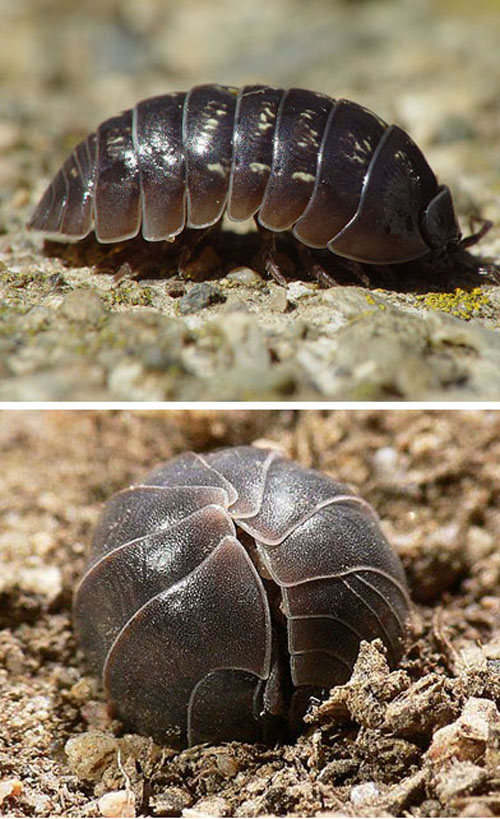
When curled up atop my grooming table, Skippy bore an eerie resemblance to the armadillidium vulgare, more commonly known as the pill bug or roly poly.
Here’s how the day went down: I placed Skippy on the grooming table to dry him. No sooner had I picked up the high-V, he laid down and curled himself into a tight ball–kind of like those hard-shelled bugs that live under rocks and coil up if you poke them. Now, generally when this happens, I reposition the dog and lightly place my hand on its underbelly. For some reason, the mere sensation of my hand on the dog’s stomach acts as a deterant from sitting down again. But Skippy was having none of that. So I tried a different tactic, wrapping my arm around his belly and holding him up while simultaneously pulling him tightly against me. That way, I reasoned, he could lean against me while I dried his opposite side. His reponse was to stand on his head. I managed to get my little contortionist dry, but I knew that grooming him would be next to impossible.
“Is Skippy really old?” I asked Jaque. “Nope,” she said. “Does he have hip or joint problems?” She shook her head. I glanced down at the black-and-white lump on my grooming table and sighed. “Is there any physical reason that he curls up like a pill bug whenever I touch him?” She gave me an amused smile. “No, that’s just his thing.” “Awesome,” I muttered, slipping a leash over his head to take him for a potty walk.
Outside, Skippy was a completely different dog, bounding across the snow and snuffling it with his nose. I let him have his fun, because I knew that as soon as we went back inside I was busting out the Groomers Helper.
Invented by 20-year pet-industry veteran Chuck Simons, the Groomers Helper is a system of loops, clamps, and tethers that eliminates sitting, spinning, biting, and head dropping through a series of six positions. I watched a demonstration of the Groomers Helper during last fall’s New England Pet Grooming Professionals expo, and I was eager to try out the product.
I wasn’t disappointed. Once I’d rigged up Skippy, it didn’t take long to groom him at all. I wouldn’t want to use the the system on every dog–I think it would be more trouble than it’s worth for most–but for the sitters, spinners, dancers, and nippers, I can certainly understand why it’s a time-saving device.

The Groomers Helper may look like a medieval torture device, but it's perfectly harmless. And there's no way I could have groomed Skippy without it.

